- All
- Face Transplant History
- History of Transplantation
-
First Successful Face and Double Hand Transplant
Joe DiMeo, receives a face and double hand transplant. He received his transplant in 2020 at NYU Lagone Hospital. It is the first successful face and double hand transplant, following two previous unsuccessful attempts at the procedure. The 23 hour surgery was performed by extended medical teams including over 140 healthcare workers.
https://www.theguardian.com/us-news/2021/feb/03/first-successful-face-double-hand-transplant-completed-joe-dimeo -
Death of Connie Culp
Connie Culp, the recipient of the USA’s first face transplant, dies at the Cleveland Clinic of an infection unrelated to her transplant. At the time of her death she was the longest living recipient in the world having received her transplant on 9th December 2008.

Image courtesy of Cleveland Clinic
-
Carmen Blandin Tarleton Receives Second Face Transplant
Carmen Blandin Tarleton, now 52 years old, has her second face transplant after her first fails due to chronic rejection. She received her first transplant in 2013 at Brigham and Women’s Hospital. It is the first retransplant in the USA, and indicates the limited lifespan of face transplants.
Press release on Carmen Blandin Tarleton, Brigham and Women’s Hospital
-
First Face Transplant for an African American
Robert Chelsea, a 68 year old man from Los Angeles, becomes the first African American to receive a face transplant. He is also the oldest transplant recipient. After being injured in car fire in 2013 he waited over seven years for a skin colour match before his transplant took place at the Brigham and Women’s Hospital in Boston. It is the 15th transplant in the USA, and the 9th at Brigham and Women’s Hospital.
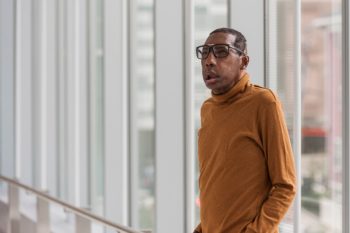
Press release on Robert Chelsea, Brigham and Women’s Hospital.
-
Second Face Transplant for Jérôme Hamon
Jérôme Hamon receives a second face transplant after this first (transplanted in June 2010) fails. His surgeon is Laurent Lantieri, who performed the original operation, and who has conducted seven other face transplants in France since 2008.
-
Katie Stubblefield Receives Face Transplant
21 year old Katie Stubblefield becomes the youngest person to receive a face transplant in the USA, and only the 7th woman worldwide. Her experiences of transplant are captured by a National Geographic team that follow her progress in the year leading up to the operation and then afterwards.
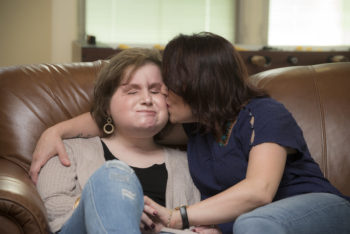
Environmental Portrait of Katie at the Ronald McDonald House face transplant photo taken for Jennifer Guerrieri of Corporate Communication
-
Death of Isabelle Dinoire
The world’s first face transplant recipient, Isabelle Dinoire, dies at the age of 49 (although her death isn’t announced until six months later). Her death from cancer is partially attributed to the side effects of the immunosuppression medication she had taken for over 10 years.
-
First ‘Emergency’ Face Transplant
Grzegorz Galasiński, a Polish stonemason, receives the world’s first ‘emergency’ face transplant after an industrial accident. The operation takes place within three weeks of injury and is the country’s first procedure. Surgeon Adam Maciejewski reports that the operation is life-saving.

Sydney Lupkin, ‘Polish face transplant patient goes home,’ 30 July 2013, ABC News.
-
First UK hand transplant
Pub landlord Mark Cahill receives the first hand transplant in the UK at the Leeds General Infirmary, by a team led by Professor Simon Kay. The programme has since performed transplants on five more recipients, including four double hand transplants.

-
Turkey’s First Full Face Transplant
Turkey’s first face transplant is performed at Akdeniz University’s School of Medicine. The recipient Ugur Acar is the youngest in the world at the age of 19. Unlike all previous face transplant patients he had lived with his facial difference all his life, having received facial burns in an accident when he was only 40 days old. Over the next two years six further transplants take place in Turkey, but none since 2013.
-
First Full Face Transplant in the USA
A team of over 30 people conducts the first full face transplant in North America, at Brigham and Women’s Hospital in Boston, USA, led by Bohdan Pomahac. The recipient is Dallas Wiens, a 25 year old man who had received full facial burns as a result of an accident with an electricity cable. The transplant is funded by a $6.4m grant from the Department of Defense awarded to the hospital in 2009, to fund 10 face transplants over 10 years. The objective is to investigate the usefulness of the surgery for veterans. In 2014 they received a further $2.4m to support the programme. Between 2009 and 2020 they conducted nine transplants.
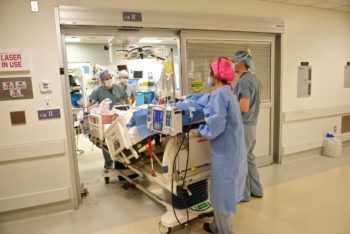
2011, Boston, MA, USA, LIGHTCHASER PHOTOGRAPHY.
( lightchaser photography image by j. kiely jr. © 2011 )Dallas Wiens describes his full face transplant, Brigham and Women’s Hospital.
-
First Full Face Transplant
The first full face transplant, including all soft tissues and the underlying bone structure, takes place at the University Hospital Vall d’Hebron in Barcelona. The recipient is a 31 year old farmer, known only as Oscar, who was injured when he accidentally shot himself in the face in 2005. It was third face transplant to take place in Spain, and the 12th in the world.
-
First Face Transplant in the USA
Connie Culp receives the first face transplant in the USA. A team led by Maria Siemionow conducts the operation, nearly four years after having received ethical approval to do so. Connie had received her facial injury when she was shot in the face by her ex-husband in 2004. In 2010 she became the first face transplant recipient to meet the family of her donor.
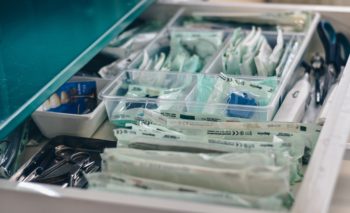
-
Ethical Approval Granted in the UK
Peter Butler receives ethical approval to carry out four face transplants at the Royal Free Hospital in London. This comes one day before Royal College of Surgeon’s Working Party release a second report on the procedure. They are still cautious but pragmatically outline a list of preconditions for any team working in the area. Butler’s programme doesn’t go live for another three and a half years due to procedural and legal challenges, and finishes in late 2011 before any transplants are performed.
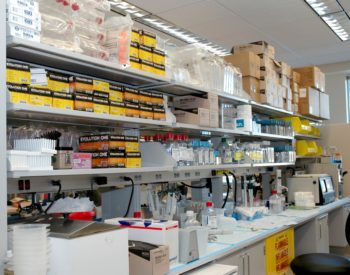
World’s first full-face transplant likely in UK | New Scientist. (n.d.).
-
The World’s Second Face Transplant
A 32 year old Chinese man, Li Guoxing, who had been mauled by a bear, receives the world’s second face transplant at Xijing Hospital. However, he dies two years later in April 2008, apparently because he stopped taking his immunosuppressant medication. As far as we are aware no further face transplants have taken place in China.
Jordan Lite, ‘Chinese face-transplant recipient has died,’ Scientific American, 22 December 2008.
-
First Partial Face Transplant
Isabelle Dinoire, a 38 year old French woman, receives the first partial face transplant at the Centre Hospitalier Universitaire of Amiens. The team is led by Bernard Devauchelle and Jean-Michel Dubarnard. Soon afterwards the media will discover that Dinoire was injured after trying to take her own life, and that the donor of the face had also died by suicide.

-
Ethical Approval is Granted in the USA
Maria Siemionow’s team at the Cleveland Clinic in Ohio, USA, becomes the first in the world to receive ethical approval for human face transplantation. By September 2005 it’s reported that they have screened 9 potential candidates.
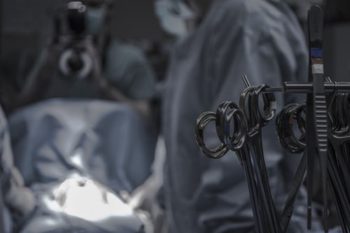
Dan Glaister, “US doctors prepare for first human face transplant,” The Guardian, 19 September 2005.
-
American Journal of Bioethics
A special issue of the American Journal of Bioethics (Vol 4, Iss 3) brings together surgeons, researchers, ethicists and psychologists to debate barriers to face transplants and how they could be overcome.
-
Ethical Questions in the USA
John H. Barker of Louisville University in Kentucky, USA announces his intention to submit an application for ethics approval to conduct a face transplant at the Jewish Hospital in Louisville. His team later withdraws their application in the face of concern about the ethical, legal and moral implications of the procedure.

David Concar, “The boldest cut,” The New Scientist 182, 2449 (May 29-Jun 4 2004): 32-37
-
Risk vs Benefit
The National Consultative Ethics Committee for Health and Life Sciences of France turns down an ethics application for five face transplants made by Paris-based surgeon Laurent Lantieri. They cite similar concerns to the Royal College of Surgeons, concluding that the risks outweigh the benefits for the patient.
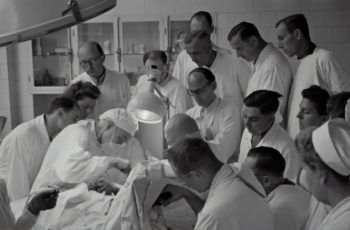
Xavier Bosch, “Surgeon denied ethics approval for face transplantation,” The Lancet, 363 (9412) (2004): 871
-
A ‘Moratorium’ on Face Transplants in the UK
The Royal College of Surgeons issue their first report on facial transplantation, which strongly advises that the surgery should not go ahead without further research. It is widely circulated, and discussed internationally. Newspaper reports suggest it is a ‘moratorium’ on face transplants in the UK. The report particularly focused on issues around immunosuppression, informed consent and the psychological impacts on the recipient.
Peter J. Morris, J.A. Bradley, L. Doyal, M. Earley, P. Hagan, M. Milling, and N Rumsey, “Facial transplantation: A working party report from the Royal College of Surgeons of England,” Transplantation, 77 (3) (2004)
-
Face Transplant Research Progresses
A research team at Cleveland Clinic, Ohio, led by Maria Siemionow, reports on successful face transplant research in rats. It suggests that the immunosuppressant regime used in hand transplantation can be transferred to the face. The team includes Selahattin Ozmen who will go on to lead the third face transplant in Turkey in 2012.
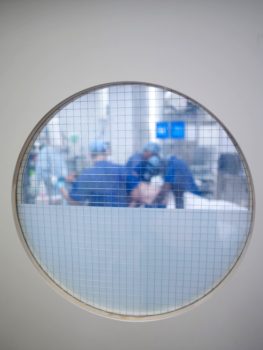
Window view into an operating theatre, UK. Credit: Adrian Wressell, Heart of England NHS FT. Attribution 4.0 International (CC BY 4.0)
Betul G Ulusal, Ali E. Ulusal, Ali E., Selahattin Ozmen, James E. Zins & Maria Z. Siemionow, “A New Composite Facial and Scalp Transplantation Model in Rats,” Plastic and Reconstructive Surgery 112(5) (2003)
-
Royal College of Surgeons Working Group
Invasive press coverage about the identities of potential face transplant patients, and about the moral and ethical implications of the surgery, leads UK charity Change Faces to write to the Royal College of Surgeons requesting a review of the procedure. The College convenes a working group of expert surgeons, psychologists and ethicists who hear evidence from a range of people, including Peter Butler.
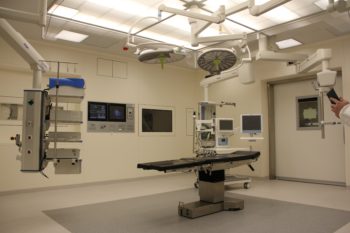
-
‘Transplant surgeons look future in the face’
Peter Butler gives a paper on facial transplantation at the British Association of Plastic Surgeons winter conference. An article appears in The Observer newspaper on the Sunday before, making public Butler’s development of a face transplant programme at the Royal Free Hospital in London for the first time. The media interest is unprecedented.

Jo Revill, “Transplant surgeons look future in the face,” The Observer, 24th November 2002.
-
‘Face Transplantation – Fantasy or Future?’
Peter Barker and Shehan Hettiaratchy publish an article in the Lancet setting out the viability of facial transplantation. Butler and Hettiaratchy were both London-based surgeons who had spent time training in the USA.
Shehan Hettaratchy and Peter Butler, “Face Transplantation – Fantasy or Future?” The Lancet, 360 (9326) (2002): 5-6.
-
‘The face is just like a hand’
The BBC carries a story about the Lyon hand transplant, with a quote from US-based surgeon and researcher John H. Barker anticipating the face as the next innovative transplants. He famously stated that ‘a face is just like a hand.’
-
First Hand Transplant
First hand transplant carried out in Lyon, France, led by Australian surgeon Earl Owen and French surgeon Jean-Michel Dubernard. Duburnard would later be part of the first face transplant team. Several face transplant pioneers cite this as the moment when face transplant began to seem viable.
A team in Lyons, France, transplanted the hand of a brain-dead donor onto New Zealander Clint Hallam, who had lost his hand in an accident while in prison in 1984. The poor functional recovery of the limb, combined with the side effects of the immunosuppression, led to Hallam having the limb amputated three years later, in 2001. However, the second hand transplant in 1999 in Louisville, Kentucky, USA, was more successful and the recipient recently celebrated the 20th anniversary of the graft.

-
First Larynx Transplant
The first larynx transplant takes place at the Cleveland Clinic, Ohio. This was a key staging point in the development of face transplantation. Cleveland Clinic would carry out the first US-based face transplant 10 years later.

-
Establishment of NHS Organ Donation Register (UK)
After a five year campaign, led by the family of organ donor Peter Cox, the national register is set up to coordinate supply and demand of organs in the UK. 2.2 million people had joined by the end of 1995. As of 2018 33% of the UK adult population was registered. However, only around 5000 people who die per year are eligible to become donors.
-
The first conference on composite tissue allograft (CTA)
A conference in Washington, D.C. discusses the possibility of composite tissue allograft transplantation (CTA), now known as vascular composite allograft (VCA). VCA transplantation involves the transfer of composite tissues including skin, fat, nerves, muscle, hair, teeth and tongue. Initially discussions focused on arms, hands and legs. The consensus at the time was that the toxicity of immunosuppression was too great to justify such life-enhancing as opposed to life-saving procedures.

-
The Organ Donation Act (USA)
The Act established national protocols for organ donation, allocation and transplantation, and established UNOS, the United Network for Organ Sharing to monitor the performance of transplant centres and organ donation organisations, and to collect data. UNOS is now the oversight authority for Vascular Composite Allograft transplants in the US, including face transplants.

-
Corneal transplant programme launches in the UK
The first successful cornea transplant was performed in 1905, almost fifty years before the first kidney transplant. It was possible because recipients do not require immunosuppression to accept the graft. However, a transplant programme wasn’t available in the UK until 1983. Today NHS Blood and Transplant reports that 2400 patients receive sight-saving corneal transplants each year.
-
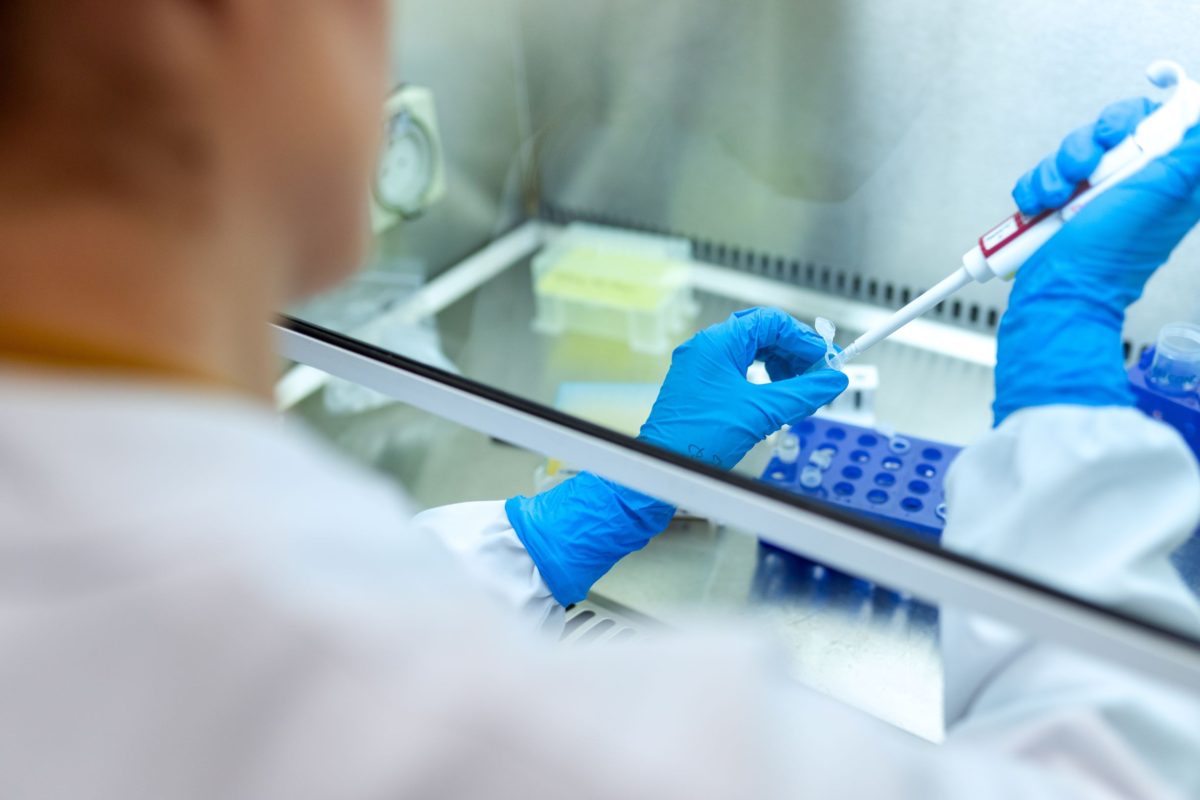
Identification of cyclosporine as an immunosuppressant
Frequently cited as the ‘wonder drug’ of transplantation, cyclosporine dramatically reduced rejection in organ transplant patients. It is a fungus derivative and was first identified by Jean-François Borrel in 1976, and first used by UK renal transplant surgeon Roy Calne in 1979. By the mid-1980s it had become the baseline immunosuppressive drug. However, it was toxic in high doses and had serious side effects including infections, lymphoma and kidney failure. An even more effective drug, tacrolimus was identified by Starzl in 1989 and has now largely replaced cyclosporine as the central ingredient of immunosuppressive regimes.
-
New definition of death
The use of organs from deceased donors was limited due to prevailing understandings of when death occurred, i.e. when the heart stopped beating. In 1968 the Harvard ad-hoc Committee on Brain Death established a new standard, that irreversible loss of brain function was also a form of death. This allowed for the use of organs from heart-beating donors. Initially shocking, the idea was gradually accepted by the medical community. The first organ-donation organisation was founded in the same year, the Boston Interhospital Organ Bank.
-
First ‘successful’ liver and heart transplants
A 19 month old girl survives for one year after a liver transplant performed by Thomas Starzl at the University of Colorado. Other liver transplants followed but the one year survival rate was only 25%, until the introduction of improved immunosuppressive drugs in the 1980s. Later the same year, on 3rd December, Christiaan Barnard performs the first heart transplant in Cape Town, South Africa. The patient, Louis Washkansky, died after 18 days. Nevertheless, 102 heart transplants were performed worldwide in 1968 alone, although only 19 patients survived for a year.

-
Introduction of immunosuppression drugs
Thomas Starzl developed the first immunosuppression protocol using prednisone, which leads to an explosion of kidney transplant operations. In one year the number of renal transplant centres in the USA rises from three to fifty. The regime remained the standard treatment for transplant patients for two decades.
-
First successful kidney transplant
Joseph Murray, J. Hartwell Harrison and John P. Merrill conduct the first successful kidney transplant between twins Ronald and Richard Herrick at Brigham’s Hospital, Boston. The men were identical twins and this reduced the immunological response. The recipient Richard died 8 years later.

Radio interview with Joseph Murray and Ronald Herrick in 2004, NPR.
-
Discovery of immunological rejection
During the Second World War Peter Medawar, a zoologist, described the rejection of transplanted skin in burns patients as an immunological response. This explained why organ transplants to date had failed. Although it wasn’t the first time this had been recognised, Medawar’s subsequent research was the most thorough and extensive to date. Later research in the 1950s identified the mechanisms of chimerism, demonstrating that immunogenic tolerance could be induced and transplant was possible. He won the Nobel Prize for this work in 1966.
-
First attempted organ transplants
The Russian surgeon Yu Yu Voronoy performs the first human-to-human kidney transplant, using an organ from a dead donor. Due to a blood group mismatch with the recipient it failed almost immediately. He performed four other failed transplants between 1933 and 1949 but, as they were only published in Russian, they were unknown to the rest of the world until the 1950s.

-
Development of vascular suturing
Mathieu Jaboulay, Chief of Surgery at Lyon, France, pioneered vascular suturing, which enables the development of organ transplantation. His work was continued by fellow Lyon surgeon Alexis Carrel, who won the Nobel Prize for it in 1912. It leads to extensive animal research in transplantation. Both men are now credited with establishing Lyon’s specialism in organ transplantation – the world’s first hand and face transplants also involved surgeons from Lyon.

A gloved hand making surgical stitches. Coloured pencil drawing, 19–. Attribution 4.0 International (CC BY 4.0)
